It’s sunny on Saturday morning when I enter Carriageworks in the Sydney suburb of Eveleigh, and the farmers market is in full throttle outside. But I bypass the stalls and crowds: I’m here to spend some time with a young woman named Emily Lahey. Three minutes, to be precise.
Entering the darkness of one of the venue’s concrete performance bays, I sit on a spotlit bench and watch a brief video narrated by Emily. Then she joins me, and we sit side by side as a massive digital clock projected on to the wall in front of us counts down from 3:00 to 0:00. When my time is up, I must leave.
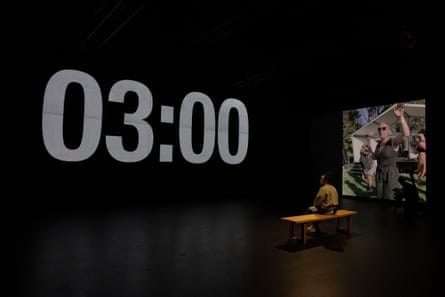
Over the course of the day, about 30 people sat with Emily. Some used their three minutes for quiet reflection. Others wanted conversation, asking her questions or sharing why they had come to see her. Usually you’d describe a project like this as performance art, but Emily isn’t an artist: she’s a terminally ill 32-year-old who doesn’t know how much time she has left. Her performance is part of a project titled Time to Live, designed by the Australian Cancer Research Foundation (ACRF) to raise awareness and funds. Each participant has effectively “bought” a slice of Emily’s time. Some were complete strangers, others were family and friends; either way, the experience provoked strong emotions. In the foyer afterwards, I meet another participant, Helen, who is visibly moved. It has raised a lot of both of us: we speak about the grief of losing our mums to cancer, the anxiety of living with a genetic predisposition.
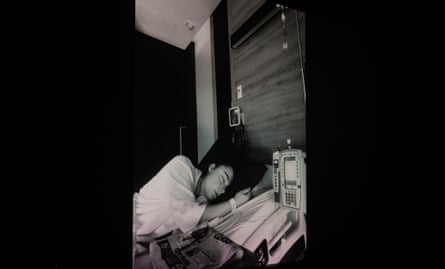



Meeting Emily for the first time, you wouldn’t know she was sick, let alone that she had undergone successive rounds of chemo, radiotherapy and immunotherapy. “People don’t believe it when I tell them that I have terminal cancer,” she says when we talk over Zoom a few days ahead of her performance.
In 2019, when she was just 27, doctors discovered a tumour the size of a cricket ball in her sinus and skull bone. Just a few months earlier she’d felt healthy and fit, and was running 5-10km a day, as a member of the Australian defence force. When she developed headaches and symptoms consistent with sinusitis, doctors initially dismissed it as such, and it was only when she began to lose vision in her left eye that scans revealed the tumour. Chemotherapy proved unsuccessful; the cancer had metastasised. Genomic testing revealed it was NUT carcinoma, a rare and aggressive mutation with few treatment options and a typical prognosis of six to nine months.
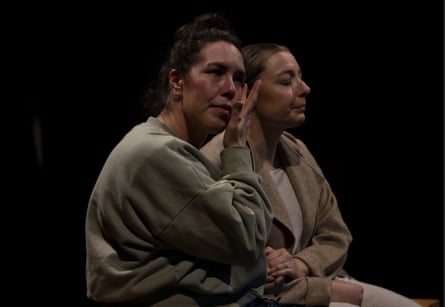



That Emily is still alive four years later is in large part due to a cutting edge treatment that is not yet available in Australia, that she was able to access from the US as part of a “compassionate” government scheme – but only once her condition had deteriorated sufficiently, and the more common treatments had proven ineffective. “[At the time] knowing that there was a proven treatment option with demonstrated efficacy overseas was really frustrating. I was like, ‘Why can’t I access it now?’” Emily says.
This aspect of Emily’s experience embodies the raison d’etre of ACRF, “to fund world-class research into the prevention, diagnosis and treatment of [cancer]”. Founded in 1984, the charity has distributed more than $184m to research institutions across Australia – and ahead of its 40th anniversary, it engaged David Gibson and Nathan Lennon, former creative directors at New York ad agency Droga5 (and best known in Sydney as co-founders of Hawke’s Brewing in Marrickville) to devise a campaign calling attention to the life-changing potential of its work.
It was Gibson and Lennon who came up with the idea of Time to Live, working with ACRF’s fundraising and marketing manager, Carly du Toit, who found Emily via a call-out. “She embodies everything that ACRF does. She is brave and bold,” Du Toit says. “And she truly is a collaborator on the project. It’s not just us bringing her on board and telling her story. She’s actively contributed to all components of the exhibition and the experience.”
Taking part was “a no-brainer” for Emily. “Without research, I wouldn’t be here,” she says. “The treatments that I’m on and the testing that I’ve been through to allow access to those treatments, are quite advanced.” She hopes Time to Live shows “the importance of continued funding towards those research efforts, to give people like me more time.”
The video I watch before sitting with Emily reveals what that extra time has meant for her. You get to see her celebrating big milestones such as her 30th birthday and her wedding to her partner, Jason, who she met just three weeks before her cancer diagnosis. You also see smaller moments, the daily joy and laughter of time spent with family and friends. In her narration, she describes her remaining time as “not a clock running out, but a precious gift not to be wasted”.
after newsletter promotion
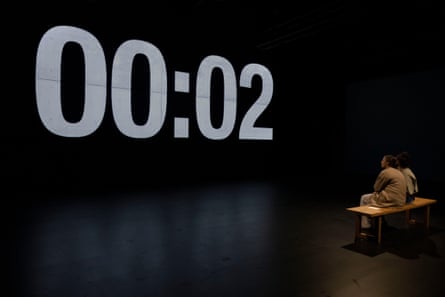



As a participant, this message hits home: inevitably, you evaluate your own life against this metric. Am I making the most of it? Helen says that this was one of the reasons she took part. She has had personal experience with cancer: every woman in her family has had it, and she lost her mum to it five years ago. “I need something that’s going to kick me into living, kick me into doing something,” she tells me. “I’m 55. Is it too late?”
Standing in the queue we bypass the chit-chat and go straight to the big topics; the experience has made us emotional and philosophical, and we end up having the kind of conversation that’s rare even among friends. We talk about how considering Emily’s story, and preparing to spend time with her, has had a kind of emotional and psychological ripple effect. Beyond the funds raised, and the time spent in the room, this is perhaps the enduring impact: a rare moment to grapple with the fleeting nature of life, and to connect with others in that grappling.
As each of us leaves Time to Live, Emily hands over an envelope with a card inside; it reads: “I’ve given you my time. Now it’s your time to give that gift to someone else.”
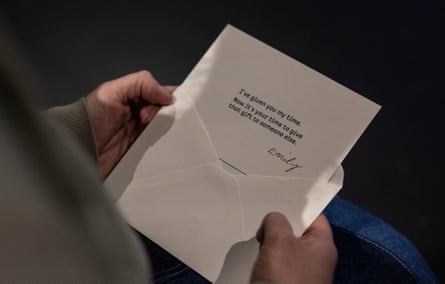



-
A film about Time to Live will be released online at the end of the month
This post was originally published on this site be sure to check out more of their content





